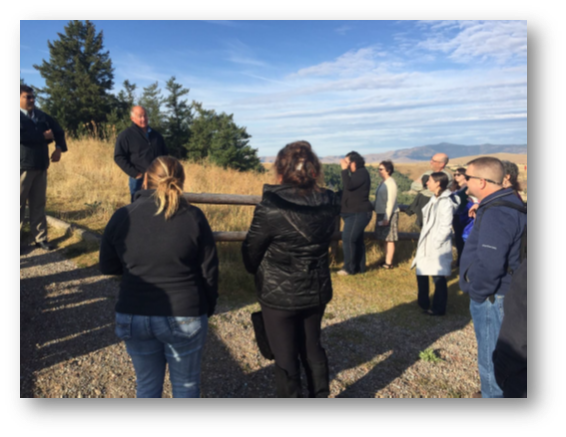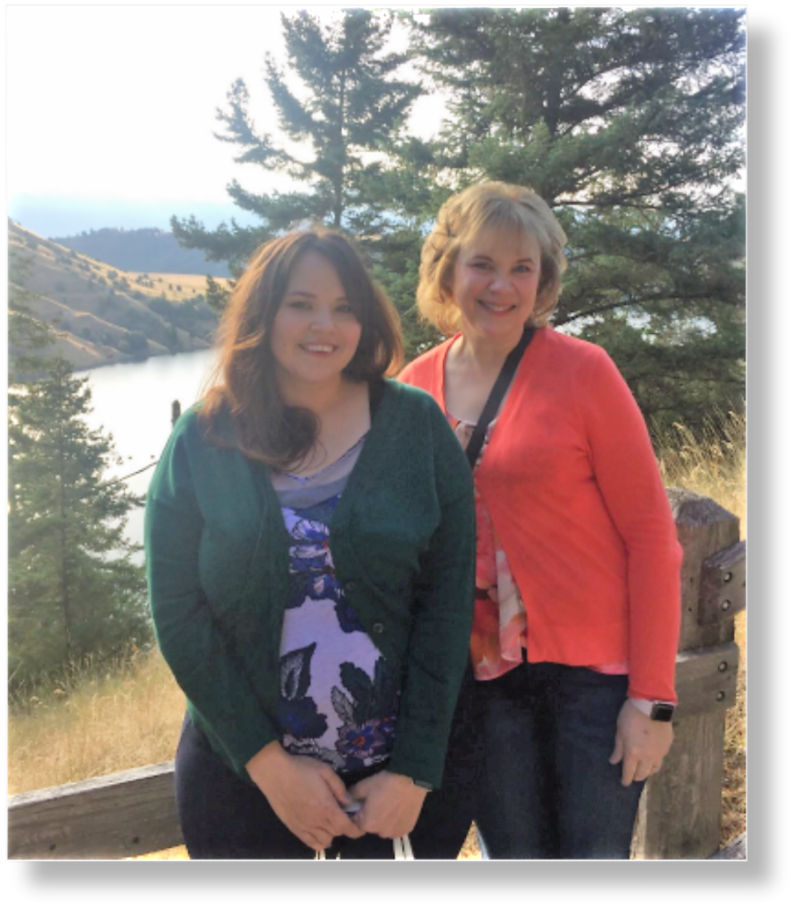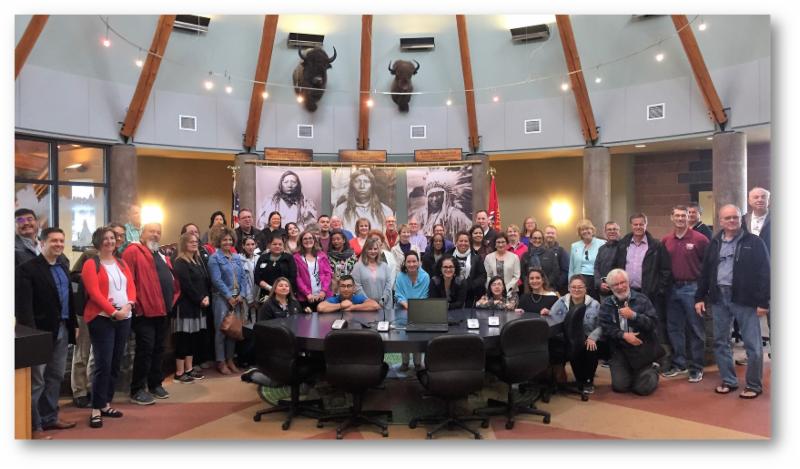Notes from the Field: First Convening of Native American Financial Institutions

Earlier this year, I had the honor of participating in the first Native American Financial Institutions Gathering convened by the Center for Indian Country Development at the Federal Reserve Bank of Minneapolis. 120 Native serving community financial institutions met with a goal of networking, learning and collaborating.
November is Native American Heritage Month, a great opportunity to share with you news from the gathering held August 27-28 on the Flathead Reservation of the Confederated Salish and Kootenai Tribes near Polson, Montana. Pictured above is a photo from our site visit to a hydroelectric dam on the reservation.
There are 5.2 million Native Americans according to the 2010 US Census. Among those who identify as American Indian or Alaska Native as their only race, the poverty rate is almost 30%, the highest rate of any US Census race group.
Challenges to financial inclusion include historical racial and wealth inequities, the number of financial deserts on tribal lands, and a lack of understanding and expertise on regulations surrounding tribal lending, among others.
About one million Native Americans live on the 567 federally recognized tribal reservations. Today, there are 16 Native credit unions, 74 Native CDFIs, and 18 Native banks serving largely unbanked and underbanked reservation communities. The 16 Native credit unions stretch from Hawaii to the Seneca Nation in New York, hold collective assets of about $300 million and serve 57,000 members. While few in number, their impact is substantial and highlights the transformational impact of CDCUs and CDFIs on local communities.

The presence of a financial institution on a reservation strengthens tribal economic sustainability. At the convening, Tongass Federal Credit Union, headquartered in Ketchikan, Alaska, shared how they are growing by meeting the needs of their community.
The credit union opened their first tribal branch in Metlakatla in 2005 after a bank closing left people without access to financial services.
The Tongass team engaged the community to shape their products and services. “We need to listen to what is needed. You can’t just put people into algorithms. Listen to stories - then tell them what we can do,” said Helen Mickel, CEO, Tongass FCU.
Tongass FCU expanded its product offerings to help members build credit and expand savings. With this inclusive model, an astounding 1,200 of the 1,400 adults residing in and around the Metlakatla branch have become credit unions members! To date, the branch has originated $7 million in loans and has taken in $3.5 million in deposits. Pictured above are branch manager Denise Hudson, left, with Tongass CEO, Helen Mickel. Helen is particularly proud of the VITA sessions they host at the branch, which helps to bring $150,000 in tax refunds back to Metlakatla communities.
Other credit union presenters included Tawney Brunsch, founder of the Lakota Federal Credit Union in Pine Ridge, South Dakota, and Phil Peters, CEO of First American Credit Union, founded in 1962 as the Navajo Land Credit Union and serving communities in Pinal County, Arizona today. Phil spoke about the Seventh Generation Principle, an ancient Iroquois philosophy shared by many Native American financial institutions, which requires that decisions made today should result in sustainable solutions seven generations into the future.
Annie Donovan, CDFI Fund Director; Martha Ninichuk, NCUA CURE Director; Ron Trahan, Chairman, and Charmel Gillian, Council Member of the Confederated Salish and Kootenai Tribes; Patrice Kunesh, Center for Indian County Development, Federal Reserve Bank of Minneapolis; and Anna Alvarez, Federal Reserve Board of Governors, along with many others, participated in the Gathering and are pictured below.

The camaraderie and sharing at this convening were amazing! Interested in hearing more about the Native American Financial Institutions Gathering? Please email me at CKim@Inclusiv.org.

Cathi Kim
Director, Inclusiv/Capital
About Native American Heritage Month:
November is Native American Heritage Month, or as it is commonly referred to, American Indian and Alaska Native Heritage Month. This month is a time to celebrate rich and diverse cultures, traditions, and histories and to acknowledge the important contributions of Native people. Heritage Month is also an opportune time to educate the general public about tribes, to raise a general awareness about the unique challenges Native people have faced both historically and in the present, and the ways in which tribal citizens have worked to conquer these challenges.

